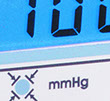
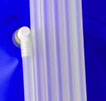

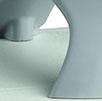
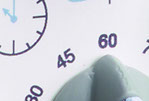




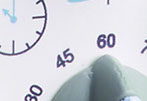
Basics
Two parts to the system.
Pump Units - They comprise of an air pump which has a pressure regulated output
and timed cycle time. (In essence they are powerful bedpumps).
Garments - They are inflatable splints which encompass the limbs of the body.
System - The pump unit inflates the garment which compresses the limb. After a
set time the garment is then deflated to relieve pressure. This cycle continues for a
required time of therapy (30-120mins).
In essence the therapy acts as an intense massage.
What is IPC used for?
There are basically 2 main benefits of using IPC.
Aid circulation
Reduce inflammation
Reducing Inflammation
The technical term for inflammation on
a limb is oedema. This can be caused
by a multitude of reasons.
Sports Injuries:
-Normally occurring after an individual has fallen, miss-stepped e.t.c and includes
sprains, muscle tears, pulled tendons, cramps and so on.
The natual reaction of the body after an injury of this type is swelling up around the
damaged area. This causes pain with the desired effect that you stop using the damaged
area in order that the healing process is allowed to occur.
In reality there is also a negative impact which is that the circulation.
Aid Circulation
This reduction in circulation of oxygenated bloody has a significant effect on the
healing rate. It is the oxygenated blood into a damaged area which promotes rapid
regeneration of the injured tissue structure and also removes any toxins which are
accumulating/building up.
How does IPC work?
This is a two stage process. The regular low pressure compression on the limb helps
squeeze the oedema(retained water) into the blood stream via the capillary network.
Once the inflammation has been removed then the second stage kicks in.
The compression of the muscles, where most blood flows, pushes the blood through
the venous system back towards the heart. There are ‘one-way’ valves in the venous
return system which ensure blood only travels back to the heart in one direction.
When the inflation cycle ends and garment is de-pressurized the blood naturally fills
up the areas of low pressure within the muscles with fresh oxygenated blood.
And so the cycle continues to pump the blood around the injured limb and increase
the healing rate significantly.
- Leg Ulcers (venous/arterial/diabetic)
- Heel Ulcers
- Lymphadema
- Stroke rehab
- Post operative trauma
- Wound Healing
- Sports training
- Sports injuries
Types of IPC
There are 3 main types of IPC on the market, namely, Single, Sequential and Peristaltic
Single Chamber (Uniform) Compression
This is the most cost effective option. The garment is made up of a single inflating
chamber.
A single hose feed air from the pump unit and inflates the entire garment in one go.
In general this method is only now used for the very small specialized garments.
Foot & Ankle
Hand & Wrist
Limb Sleeves
Stumps
© 2021 26310 MJS Group UK
